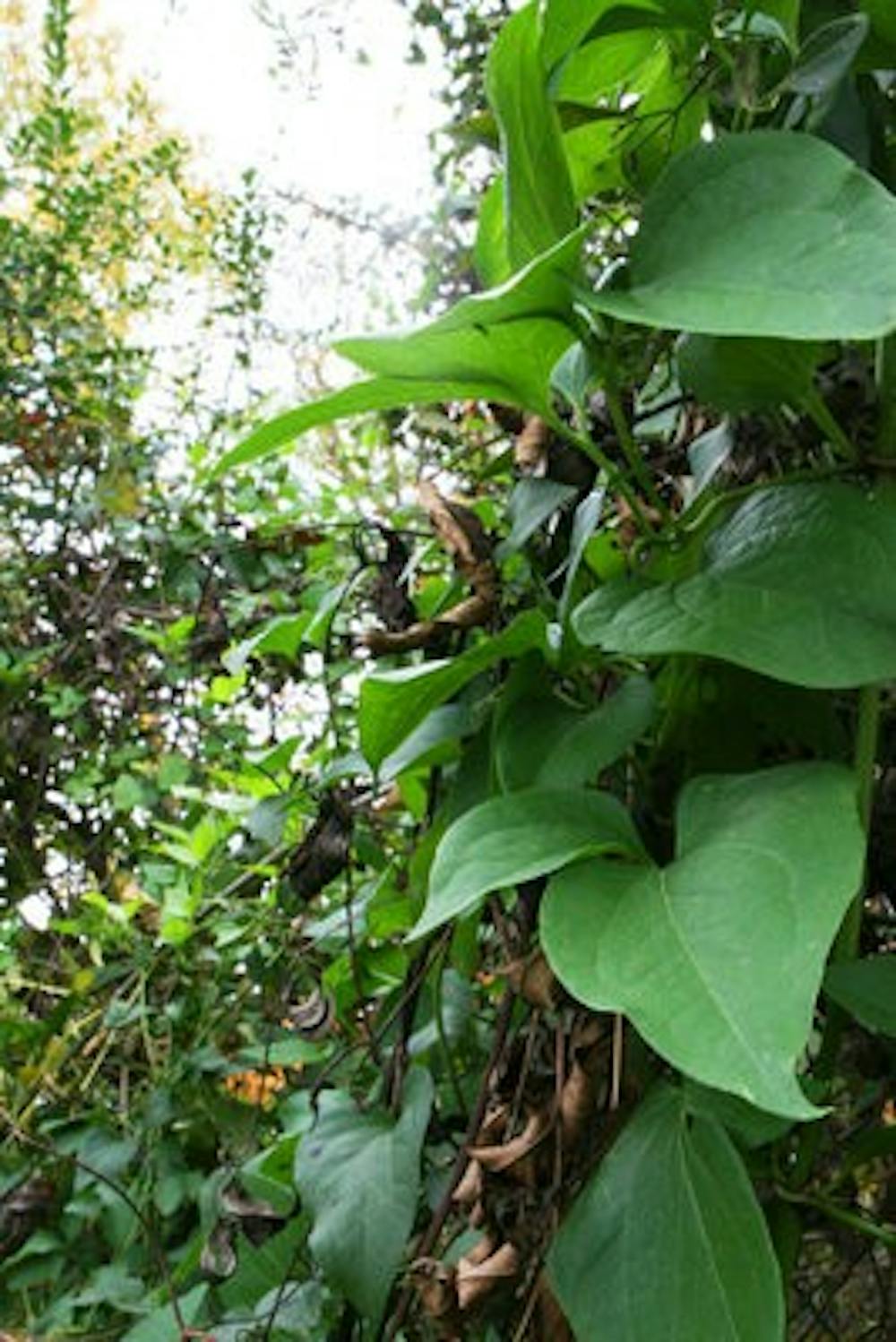Like it or not, kudzu is a fixture of the Alabama landscape. While there isn't much use for the invasive plant, one little beetle is calling it lunch.
The Megacopta cribraria, or kudzu bug, has an appetite for the leafy menace, and it's slowly appearing in Alabama. Charles Ray, a research fellow in the University's entomology and plant pathology department, said the insect is already in Lee County.
"In Alabama, we've only found them in seven counties," Ray said. "They do seem to be spreading northeastward much faster than they're spreading westward."
The beetle feeds on a variety of plants, but it likes kudzu in particular, Ray said.
"It feeds on several plants, kudzu being its favorite host, and a kudzu patch will support thousands and thousands and thousands of the bugs," Ray said.
Kudzu was originally introduced in the South during Reconstruction as a means to feed livestock and control erosion, but the fast-growing leafy vine spread quickly, overtaking native vegetation.
"It can grow in some of the worst, dry soil there is and thrive, so it will just typically grow anywhere," said Anna Leigh Peek, sophomore in agricultural communications.
Ray said the kudzu bug's appearance, which started making headlines in Georgia in late 2009, could help mitigate problems caused by the plant.
"And that sounds good, and in some respects it is because kudzu is a problem to the environment," Ray said.
"But the kudzu bug is not going to kill kudzu. It is simply going to reduce the amount of kudzu's vine lengths, seeds, et cetera--the biomass that kudzu produces in a year."
The benefits of the bug's presence come with potential drawbacks, however.
"When people in the agricultural community first heard about it, we're like, 'Man, this is great. There is a bug out there that can help take care of our kudzu problem,'" Peek said. "But then people started realizing that it attacks legumes, and soybeans are legumes," Peek said.
Soybeans are a staple crop in Alabama, and researchers in Georgia found that farmers who didn't treat their fields with pesticides saw a 20\0xAD-30 percent reduction in their soybean yield without noticing any visible damage the bugs had caused.
Peek said the farmers who did spray found more bugs would return after three to five days.
Ray said the kudzu bug is also finding its way onto lawns.
"It's also been found on wisteria, some other ornamental legumes, and it's been found on fig," he said.
Ray said the greatest concentration of the beetles in Lee County can be found just outside of Auburn around Exit 51 off Interstate 85, where there were thousands of the beetles before temperatures began to fall.
Ray said homeowners should be watchful as the kudzu bug decides where to spend the winter.
"There are homes in some of the infested areas in Georgia that have had thousands and thousands of the bugs clustering on the outside of the homes and apparently trying to enter the homes," he said.
While the beetles do not bite or sting and thus pose no threat to people or their pets, Ray cautioned against agitating them.
"If you disturb them they do produce a stinkbug-like odor," he said. "They are not a true stinkbug, but they do produce a foul odor if you crush one in your carpet of your home."
A species native to Asian countries, the beetle's appearance in the Southeast is a mystery.
Ray said researchers from several states are studying the insect's DNA to pinpoint precisely from where the bugs originated and how they entered the country.
Florida is expected to be the next target for the hungry beetles, and their presence has also been documented in the Carolinas and Virginia.
Ray said he's interested in tracking the kudzu bug's march through Alabama.
"I don't want to see bugs from Georgia," Ray said. "If someone finds a bug in (Alabama), I would really like to see a specimen."
Do you like this story? The Plainsman doesn't accept money from tuition or student fees, and we don't charge a subscription fee. But you can donate to support The Plainsman.




